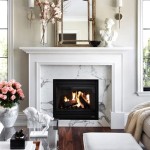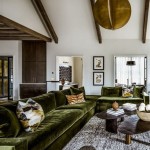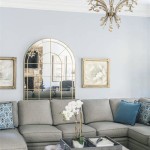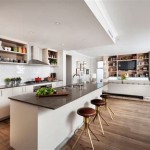Decorative Trees for Living Room
Adding greenery to a living room can significantly enhance its aesthetic appeal and create a more inviting atmosphere. Decorative trees, in particular, offer a striking visual element, introducing texture, color, and a touch of nature indoors. Selecting the right tree depends on various factors, including the available space, lighting conditions, and the overall design scheme of the room.
Considerations Before Choosing a Decorative Tree
Before introducing a decorative tree into a living room, several key factors warrant consideration. The size of the room plays a crucial role in determining the appropriate tree size. A large tree in a small room can overwhelm the space, while a small tree in a large room might appear insignificant. Assessing the available light is equally important. Different tree species have different light requirements, and choosing a tree that aligns with the room's lighting conditions is essential for its health and longevity. Finally, the existing décor and color palette of the living room should influence the choice of tree. The tree's foliage, bark, and overall shape should complement the existing aesthetic.
Popular Decorative Tree Options for Living Rooms
Several tree species thrive indoors and make excellent choices for living room décor. The Fiddle Leaf Fig, with its broad, sculptural leaves, has become a popular choice for its dramatic presence. However, it requires bright, indirect light and consistent care. The Rubber Plant, known for its glossy, deep green leaves, is another popular option, offering a more low-maintenance alternative. It tolerates lower light conditions and requires less frequent watering. For a more compact option, the ZZ Plant is an excellent choice, thriving even in low light and requiring minimal watering. Its dark green, almost black foliage offers a unique aesthetic.
Maintaining Indoor Decorative Trees
Proper maintenance is crucial for the health and longevity of indoor decorative trees. Watering requirements vary depending on the species, but overwatering is a common mistake that can lead to root rot. It's crucial to allow the soil to dry out slightly between waterings. Regularly checking the soil moisture with a finger is a reliable method. Providing adequate light is also essential. While some species tolerate lower light conditions, most benefit from bright, indirect light. Positioning the tree near a window, but avoiding direct sunlight, is generally recommended. Furthermore, regular dusting of the leaves can help the tree absorb light more efficiently and prevent pest infestations. Occasionally wiping the leaves with a damp cloth can also remove dust and improve their appearance.
Creating Visual Interest with Placement and Accessories
The placement of a decorative tree within the living room can significantly impact its visual impact. Placing a taller tree in a corner can create a vertical focal point, while a smaller tree can be placed on a side table or shelf to add a touch of greenery to a specific area. Using decorative pots and planters can further enhance the tree's aesthetic appeal. Choosing a pot that complements the tree's foliage and the room's décor can create a cohesive and stylish look. Adding a layer of mulch or decorative stones to the top of the soil can also add a finishing touch and help retain moisture.
Addressing Common Issues with Indoor Trees
Indoor trees, like any living organism, can experience issues. Leaf drop, for instance, can be caused by various factors, including overwatering, underwatering, temperature fluctuations, or pests. Identifying the cause is crucial for addressing the problem effectively. Pest infestations, such as spider mites or mealybugs, can also occur. Regular inspection of the leaves and branches can help detect infestations early on. Treating the infestation promptly with appropriate insecticides or natural remedies can prevent further damage. If the tree outgrows its pot, repotting into a larger container with fresh potting mix can provide the necessary space for continued growth. Understanding the specific needs of each tree species and addressing issues promptly can ensure their long-term health and vibrancy.
Benefits of Incorporating Decorative Trees
Beyond their aesthetic appeal, decorative trees offer several benefits for indoor environments. They can improve air quality by absorbing carbon dioxide and releasing oxygen. Studies have also shown that the presence of plants can have a positive impact on mood and well-being, reducing stress and promoting relaxation. Furthermore, incorporating trees into a living room can create a sense of connection with nature, bringing a touch of the outdoors in and enhancing the overall ambiance of the space.

Costway 6 Ft Artificial Ficus Silk Tree Home Living Room Office Decor Wood Trunks Qd 65359

22 Best Indoor Tree Ideas House Design

Barnyard Designs 4ft 48 Artificial Boxwood Spiral Topiary Trees Indoor Entryway Living Room Or Covered Front Porch Home Decor Faux Fake Plant

Realistic Diy Faux Trees Lavender Brook Home

Top 10 Best Artificial Trees For Living Room Decor Elevate Your Space

Contemporary 3 93 Ft Green Outstanding Artificial Money Trees For Home Decor Living Room And Dining Xz 74350 00 The

How To Decorate Multiple Christmas Trees In Your Home Balsam Hill

6 Ft White Artificial Christmas Tree Set Of 3 With 96 Led Warm Lights For Decoration Inside And Outside Xz P181843y The Home

Two Trees In The Living Room Bushel A Pickle

Lightshare 6 Ft Lighted Oak Tree 88 Led Warm White Artificial Christmas Greenery W Lights For Home Decoration Indoor Outdoor








